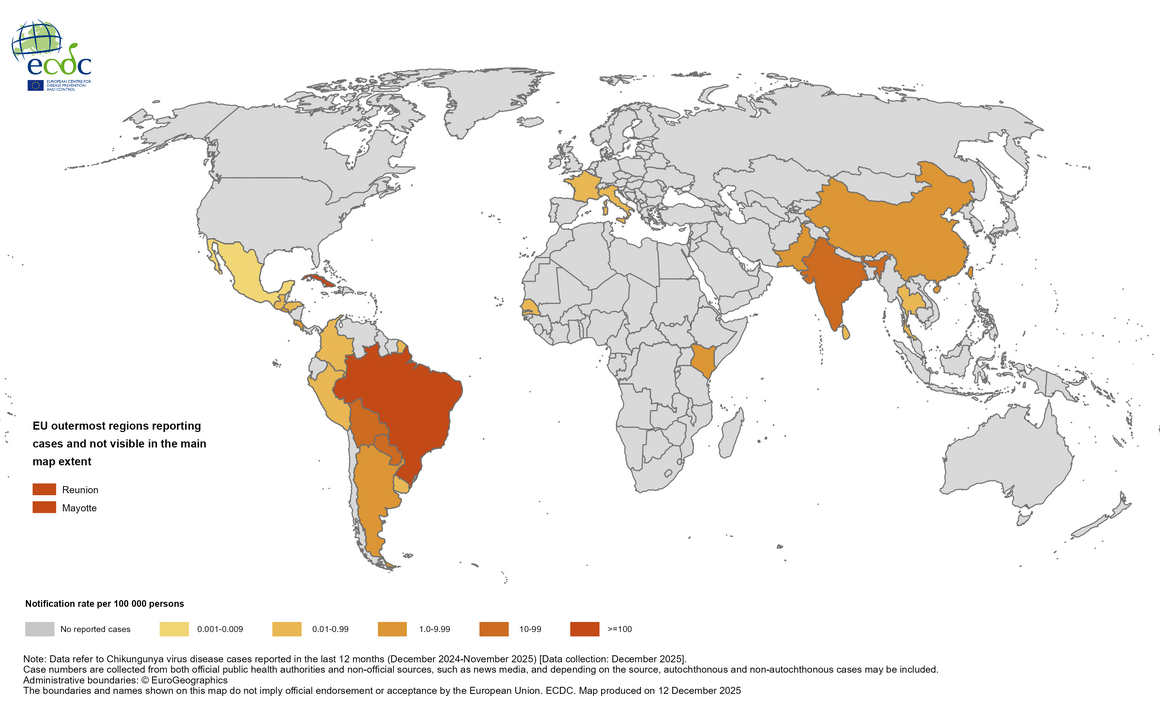- Frailty Plus Depression Equal Greater Dementia Risk Medscape
- Which depression symptoms may predict dementia? Medical News Today
- Losing confidence in yourself could be a sign of Britain’s most feared disease tyla.com
- Specific depressive symptoms…
Blog
-
Frailty Plus Depression Equal Greater Dementia Risk – Medscape
-

Flight rules make ‘Home Alone 2’ plot less plausible today
Panic erupts in the McCallister household as soon as the day begins. The parents’ alarm clock never rings, bags and coats spill across the floor, and the family barrels out the door to catch a flight to Florida.
The pandemonium intensifies at the…
Continue Reading
-

Bondi Beach shooting suspect trained with his father, police say
MELBOURNE, Australia (AP) — A man accused of killing 15 people at Sydney’s Bondi Beach conducted firearms training in an area of New South Wales state outside of Sydney with his father, Australian…
Continue Reading
-

12-month Chikungunya virus disease case notification rate per 100 000 population, December 2024 to November 2025
Since the previous update on 14 November 2025 and as of 12 December 2025 (data…
Continue Reading
-
Multan’s Nishtar Hospital sacks doctor for misbehaving with patient’s family after video goes viral on social media – Dawn
- Multan’s Nishtar Hospital sacks doctor for misbehaving with patient’s family after video goes viral on social media Dawn
- Multan’s Nishtar doctor making obscene gestures on video loses job The Express Tribune
- Outrage as junior doctor at Multan…
Continue Reading
-

City Beach fined $14m by Federal Court over button battery safety breaches
Australian fashion retailer City Beach has been fined $14 million for selling “non-compliant button battery products”.
The Federal Court heard the retailer, owned by parent company Fewstone, admitted it had supplied products like toys, digital notepads, key rings and light-up Jibbitz accessories for Crocs shoes on more than 54,000 occasions between 2022 and 2024.
The Australian Competition and Consumer Commission (ACCC) started court proceedings against the retailer, arguing the products in question did not comply with mandatory button battery safety and information standards.
Button batteries are small, flat, circular batteries, commonly used in toys, remote controls and other small products.
If swallowed, they can cause severe internal burns and even death.
The ACCC said City Beach’s “pervasive failures” had put more than 50,000 young children at risk of severe injury or death.
“Button batteries pose a significant risk to children, and can be fatal,” ACCC commissioner Luke Woodward said.
“The ACCC will not hesitate to take strong enforcement action against businesses that fail to comply with the button battery standards.”
City Beach has issued a product recall on its website, saying: “Nothing is more important to us than the safety and trust of the people who shop with us.”
“We are deeply sorry for any worry or inconvenience this situation may cause you and your family.“
Anyone who purchased any of the listed products has been urged to stop using them immediately and return them for a full refund.
It was the first court proceeding brought by the ACCC for breaches of button safety standards.
Continue Reading
-
Vietnamese fish, bee named among 70 species newly identified in 2025 – Vietnam+ (VietnamPlus)
- Vietnamese fish, bee named among 70 species newly identified in 2025 Vietnam+ (VietnamPlus)
- Glittering jewel butterflies: Natural History Museum describes 262 new species in 2025 Natural History Museum
- American Museum of Natural History’s new…
Continue Reading
-
LHC CJ suspends operation of Punjab land protection ordinance – Dawn
- LHC CJ suspends operation of Punjab land protection ordinance Dawn
- LHC suspends implementation of Punjab Property Ownership Ordinance Geo News
- LHC suspends Punjab Property Ordinance, CJ warns of ‘unchecked powers’ Pakistan Today
- LHC stays…
Continue Reading
-
BRCA Carriers: Hormone Therapy May Not Up Breast Cancer Risk – Medscape
- BRCA Carriers: Hormone Therapy May Not Up Breast Cancer Risk Medscape
- Is Menopausal Hormone Therapy Associated With Increased Breast Cancer Risk? The ASCO Post
- Women with BRCA mutations may be suffering unnecessarily due to ‘misinformation’ about…
Continue Reading
-

Derrick Henry, John Harbaugh Explain His Absence on Key Fourth-Quarter Drive
When Derrick Henry cruised into the end zone for a 2-yard touchdown in the fourth quarter Sunday, he gave the Ravens a two-score lead and M&T Bank Stadium was rocking.
The New England Patriots hadn’t stopped Henry all night and they…
Continue Reading